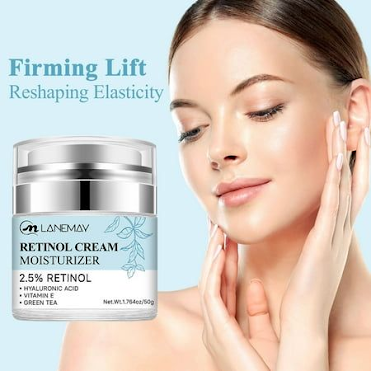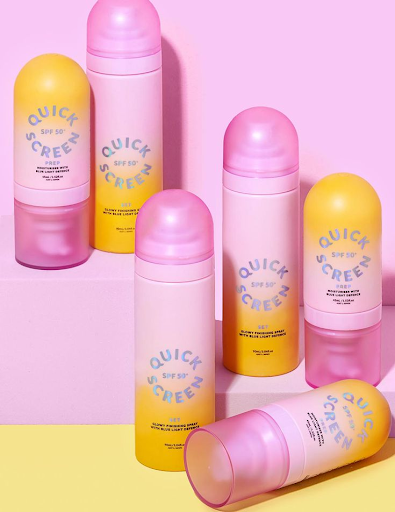Do you ever look in the mirror and wonder when your skin started looking so tired? The fine lines, dullness, and uneven texture seem to appear overnight, leaving you searching for solutions. But here’s the shocking truth: many of the so-called “miracle” products you’ve been using might be doing more harm than good. In 2025, it’s time to ditch the chemicals and embrace natural, effective remedies that truly transform your skin.
This guide unveils 10 anti-aging recipes that are not only packed with skin-loving nutrients but also harness the power of nature to bring your glow back. From reducing wrinkles to boosting radiance, these recipes will leave you feeling inspired to take control of your skincare journey.
amazon.com/author/passmarkeducators.com
Why Natural Remedies Are Game-Changers for Aging Skin
The skincare industry is flooded with products that promise the world but often fall short. What they don’t tell you is that many of these products contain harsh chemicals that can irritate the skin and accelerate aging. Natural remedies, on the other hand, are rich in antioxidants, vitamins, and minerals that nourish your skin without harmful side effects. The best part? Most of these ingredients are probably already in your kitchen.
1. Avocado & Honey Hydrating Mask
Why It Works: Avocado is a powerhouse of healthy fats and vitamin E, which deeply moisturize and repair skin. Honey’s antibacterial and hydrating properties make it the perfect partner for dry, tired skin.
Recipe:
1 ripe avocado
2 tablespoons of raw honey
Mash the avocado into a smooth paste and mix with honey. Apply to your face and leave it on for 20 minutes. Rinse with lukewarm water. Use once a week for soft, plump skin.
2. Green Tea & Aloe Vera Rejuvenating Toner
Why It Works: Green tea is a rich source of catechins, which protect against free radicals and prevent premature aging. Aloe vera soothes and hydrates the skin, making it an excellent toner.
Recipe:
1 cup of brewed green tea (cooled)
2 tablespoons of fresh aloe vera gel
Combine the ingredients and store them in a spray bottle. Use this toner after cleansing your face to refresh and prep your skin. Use daily for best results.
3. Turmeric & Yogurt Brightening Mask
Why It Works: Turmeric’s anti-inflammatory properties reduce redness and dark spots, while yogurt’s lactic acid exfoliates and brightens.
Recipe:
1 teaspoon of turmeric
2 tablespoons of plain yogurt
Mix the ingredients into a smooth paste. Apply to your face and leave it on for 15 minutes. Rinse off with cool water. Use twice a week for radiant, even-toned skin.
4. Cucumber & Mint Cooling Eye Gel
Why It Works: Cucumbers are rich in water content and antioxidants that reduce puffiness, while mint improves circulation and refreshes the skin.
Recipe:
1 small cucumber (blended)
1 tablespoon of fresh mint leaves (blended)
Strain the mixture and refrigerate. Apply under your eyes with a cotton pad to combat dark circles and puffiness. Use daily for a refreshed look.
5. Papaya & Lemon Glow Mask
Why It Works: Papaya contains papain, an enzyme that gently exfoliates, while lemon juice brightens and fades dark spots.
Recipe:
1/2 cup of mashed papaya
1 teaspoon of lemon juice
Mix and apply to your face for 15 minutes. Rinse thoroughly with water. Use weekly but avoid if you have sensitive skin or are exposed to sunlight immediately after use.
6. Rosehip & Jojoba Oil Moisturizer
Why It Works: Rosehip oil is loaded with vitamin A and essential fatty acids that reduce wrinkles and improve skin texture. Jojoba oil hydrates without clogging pores.
Recipe:
3 tablespoons of rosehip oil
2 tablespoons of jojoba oil
Mix the oils and store them in a dark glass bottle. Apply a few drops to your face and neck twice daily for a glowing, youthful complexion.
7. Walnut & Milk Anti-Aging Scrub
Why It Works: Ground walnuts exfoliate dead skin cells, while milk’s lactic acid nourishes and smoothens the skin.
Recipe:
2 tablespoons of ground walnuts
2 tablespoons of milk
Combine the ingredients and gently massage onto your face in circular motions. Rinse off to reveal soft, rejuvenated skin. Use once a week.
8. Pomegranate & Coconut Oil Serum
Why It Works: Pomegranate seed oil repairs skin damage, while coconut oil provides deep hydration, making this serum perfect for overnight use.
Recipe:
2 tablespoons of pomegranate seed oil
1 tablespoon of virgin coconut oil
Mix well and store in a dropper bottle. Apply a few drops to your skin before bedtime for maximum repair and hydration.
9. Banana & Oatmeal Soothing Mask
Why It Works: Bananas are rich in potassium and vitamin C, which boost hydration and elasticity. Oatmeal calms irritated skin and gently exfoliates.
Recipe:
1 ripe banana
2 tablespoons of ground oatmeal
Mash the banana and mix with oatmeal. Apply to your face, leave on for 15 minutes, and rinse. Use weekly for smoother, softer skin.
10. Aloe Vera & Vitamin E Overnight Mask
Why It Works: Aloe vera hydrates and soothes, while vitamin E repairs and protects against environmental damage.
Recipe:
2 tablespoons of aloe vera gel
1 vitamin E capsule (pierced to extract the oil)
Mix the ingredients and apply to your face before sleeping. Rinse off in the morning for refreshed, radiant skin.
Pro Tips for Radiant Skin
Hydration Is Key: Drink plenty of water to keep your skin hydrated from within.
Consistency Matters: Use these recipes regularly for long-term results.
Sunscreen Is Essential: Protect your skin from harmful UV rays to prevent premature aging.
Healthy Diet: Incorporate antioxidant-rich foods like berries, nuts, and leafy greens into your meals.
Conclusion
Transforming tired skin into a radiant glow doesn’t require expensive treatments or harsh chemicals. With these 10 anti-aging recipes, you can harness the power of natural ingredients to rejuvenate and nourish your skin. Start incorporating these remedies into your skincare routine today, and watch as your complexion becomes healthier, brighter, and more youthful in 2025.





